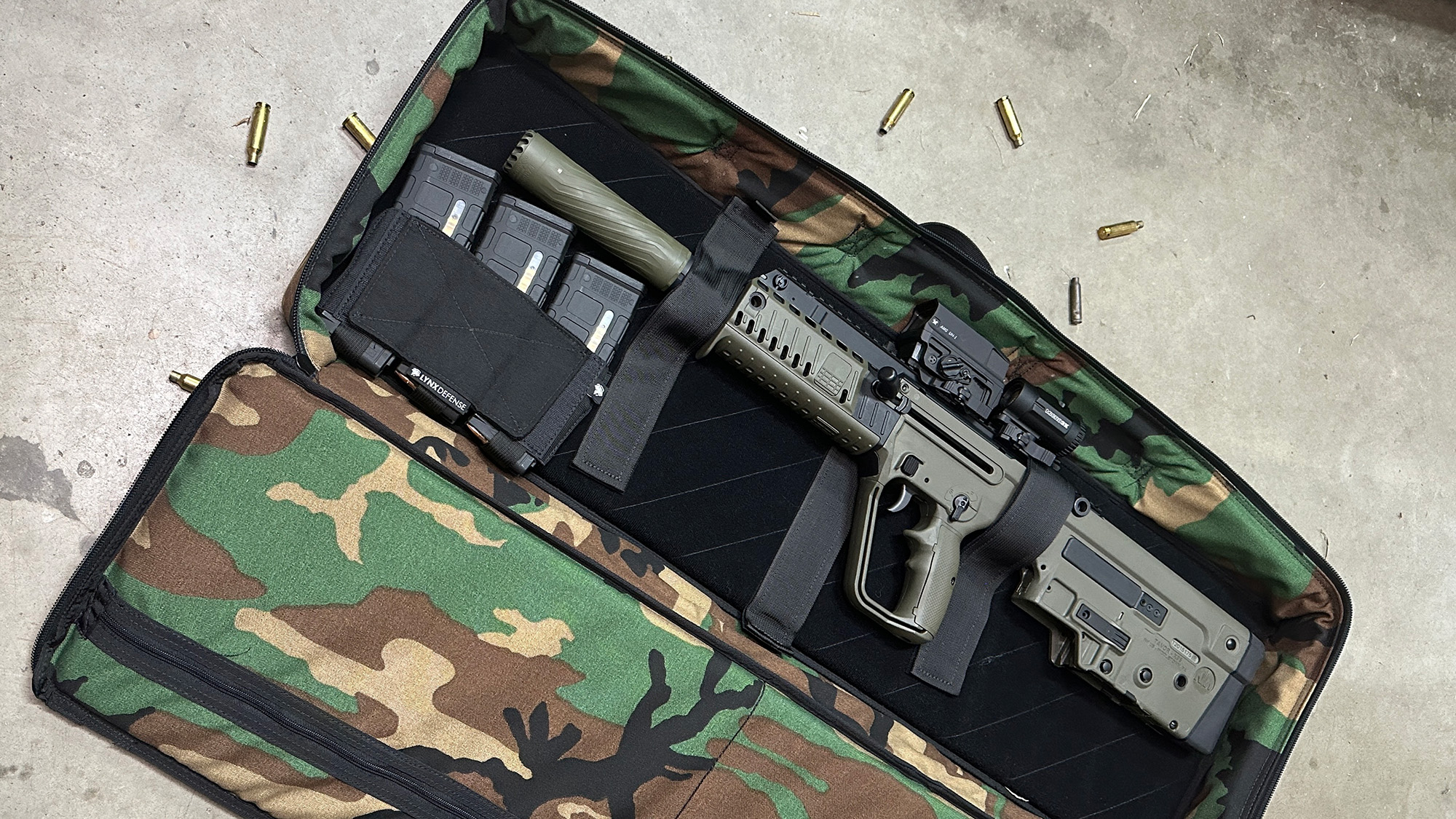
Ready to see what we have coming?
Lynx Defense will release some new things soon. Let us deliver them right to your inbox!

Lynx Defense will release some new things soon. Let us deliver them right to your inbox!
We may earn revenue from product links on this page and participate in affiliate programs. Learn More ›
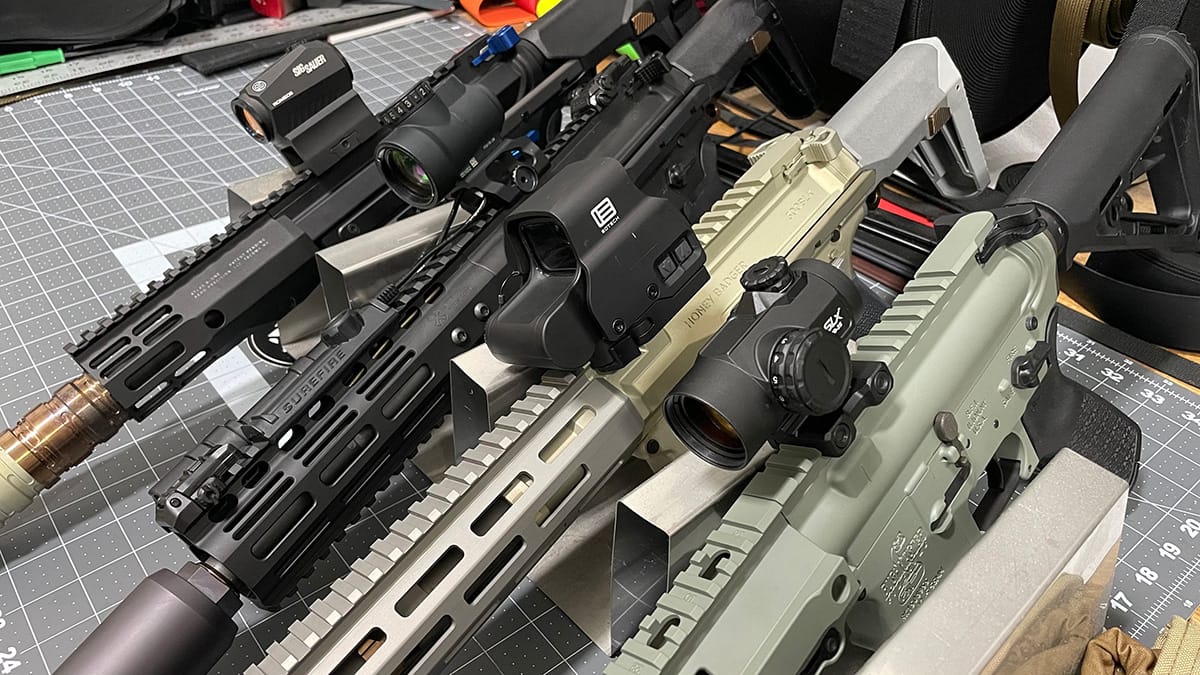
So you are in the market for a red dot? Well, it’s not as simple as telling you which is the best red dot sight to buy, or you wouldn’t be on the hunt!
There are many red dots available and while we won’t be able to give you a simple: buy this sight for your gun.
We will provide you with unbiased feedback on as many red dot sights as we can get out hands-on. This post will be forever updated and changed as optics are introduced and/or discontinued.
We want to keep you up to date on red dots because we LOVE red dots.
Updated August 2024: Removed the Sig MSR and added the new Primary Arms MD-20 Gen II. Removed Sig Romeo Gen I and Replaced with Gen II
The internet is full of financial shamers. What does that mean? Post your budget AR build in an AR-15 Facebook group, and you’ll immediately be called poor.
That’s stupid.
Lynx Defense is a premium gear manufacturer and what some would call expensive.
But we will never insult someone for buying what they can afford. We hope it’s our products, but we want people to love firearms and gear as much as we do at the end of the day.
People have families, and money doesn’t grow on trees, so obviously, you want to get the most bang for your buck out of whatever you buy, including your gun’s red dot sight.
Let me be clear: there is a difference in quality budget red dots and cheap red dots. We will not include any cheap red dot sights because they are not quality optics.
So, let’s dive in. These will not be in order, so read through each one and determine what’s best for you.
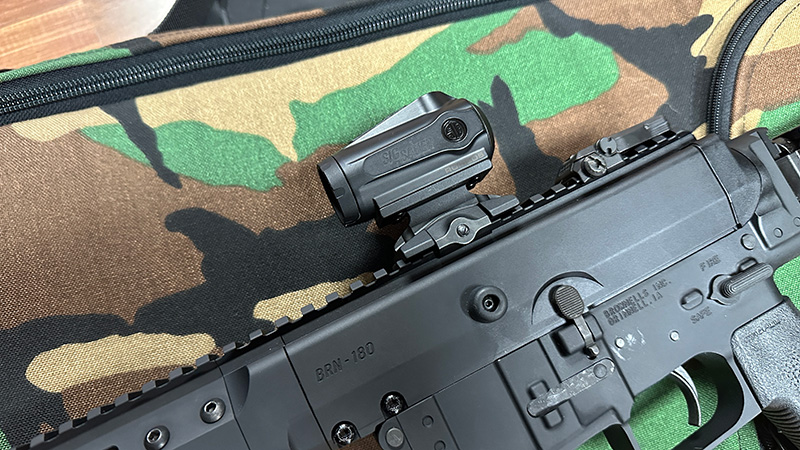
The Sig Romeo 5 red dot sight is one of the most popular and has been around for some time.
So, it’s no surprise that Sig updated the optic in looks and features.
I got my hands on the Romoeo5 Gen II to see if it is worth the upgrade or if Gen I is “just as good.”
In true Sig fashion, the price point is still reasonable.
Its price is slightly elevated over the Gen I but still within $20-30.
The Romeo II still has a 40,000-hour battery life on the medium setting and still a 2 MOA dot.
One big difference is that the Gen II has an option for a Red or Green dot.
It is slightly heavier, at 5.5 oz over 5.1 oz, and sits a bit higher, at 61.5 mm vs. 38.6mm.
Last but not least, the Gen II gets 10 daytime brightness settings instead of the Gen I’s 8 daytime brightness settings.
In terms of function, it works nearly the same, and the controls are similar but changed for a new touchpad.
I like the aesthetic upgrade of the Romeo5 Gen II paired with the additional brightness settings and the taller mount, I’d say this is a worthwhile upgrade.
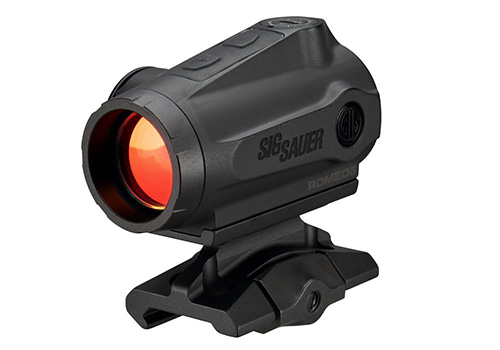
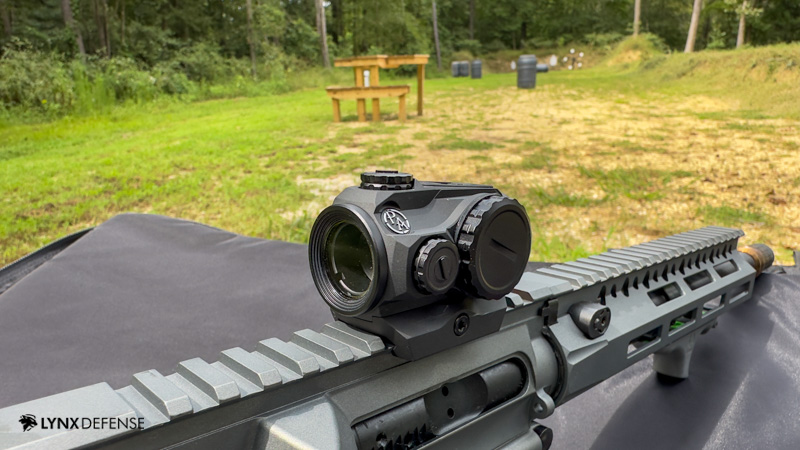
The PA MD-20 Gen II is a priced extremely fair considering it comes from a company with a good reputation in firearm optics.
I’ve been testing and using the MD-20 on a .300 Blackout AR pistol build, and I’ve been extremely happy with the red dot crispness and overall quality of the optic.
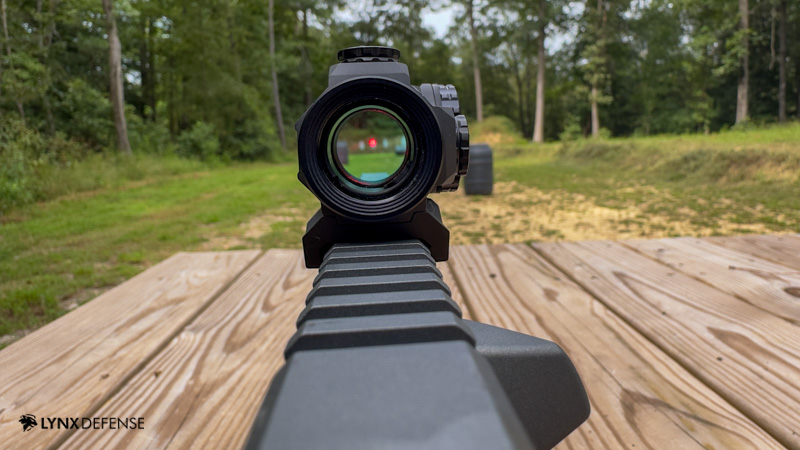
Packing a 50,000 hour battery life, with 12 brightness settings you will easily find the right brightness for your needs it also clocks in at just 3.8 oz and uses the extremely common CR2032 battery.
I like the MD-20 over many of the other PA micro dot options because all of the caps and controls are low-profile.
The adjustment turrets and battery compartment caps don’t stick up a mile and distract and block your peripheral vision when you are aiming.
Adjustment is extremely easy because the turret caps have built in notches for adjusting the dot.
Changing the battery is also easy because the large slot allows a tool or coin to be removed, and the new texturing on the edge of the battery cap makes it easy to remove the cap without any tools.
My only complaint is it doesn’t come with a riser. If you want a riser you can always grab the Primary Arms GLx co-witness micro dot riser or one of the many other optic risers with an Aimpoint footprint.
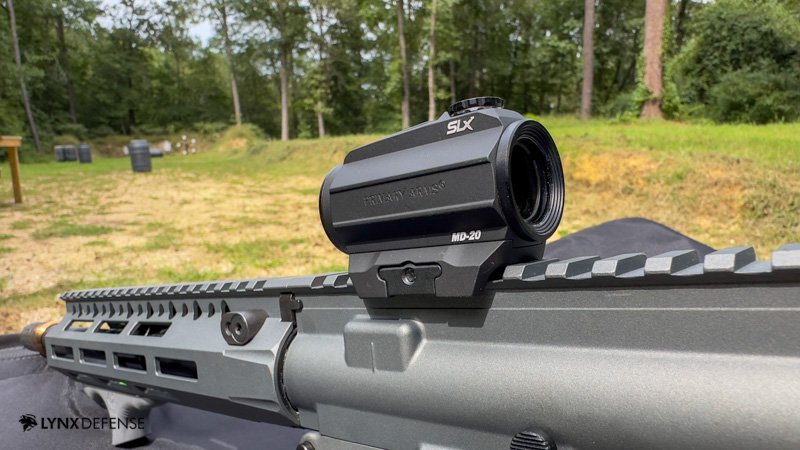
If money is a factor and you need the mount included, go for the MD-25 instead. It’s also a great optic but not as aesthetically pleasing and polished as the MD-20.
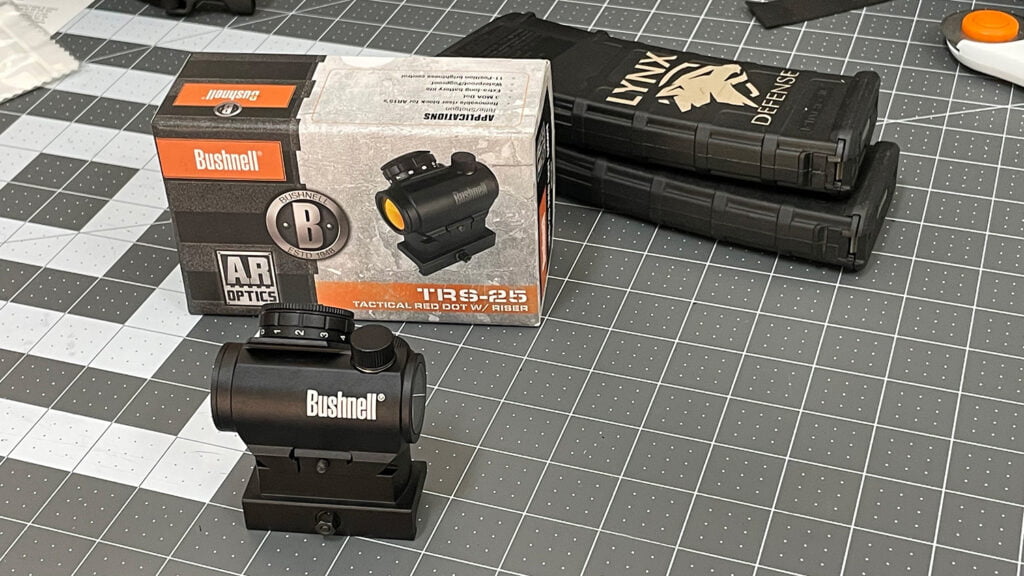
The Bushnell TRS-25 is probably the least expensive red dot sight on the market. It’s the cheapest red dot sight I’d be comfortable recommending to people.
Many people are drawn to the Bushnell TRS-25 because it’s an extremely affordable red dot sight.
Amazon regularly has these for around $50-$70 and actually has a pretty decent set of features.
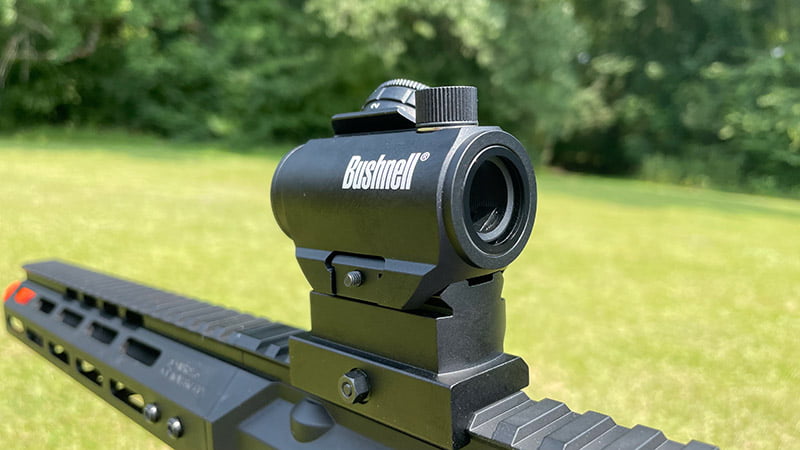
The TRS-25 comes with a 1913 rise block included, which really makes this a bang for your buck.
If your funds are tight and you need a decent optic for the least amount of money possible, grab the TRS-25.
This is an optic you can buy and not feel bad about buying a new optic later and not waste a ton of money.
Don’t go any cheaper than this optic. This is the bottom of the acceptable optic list.
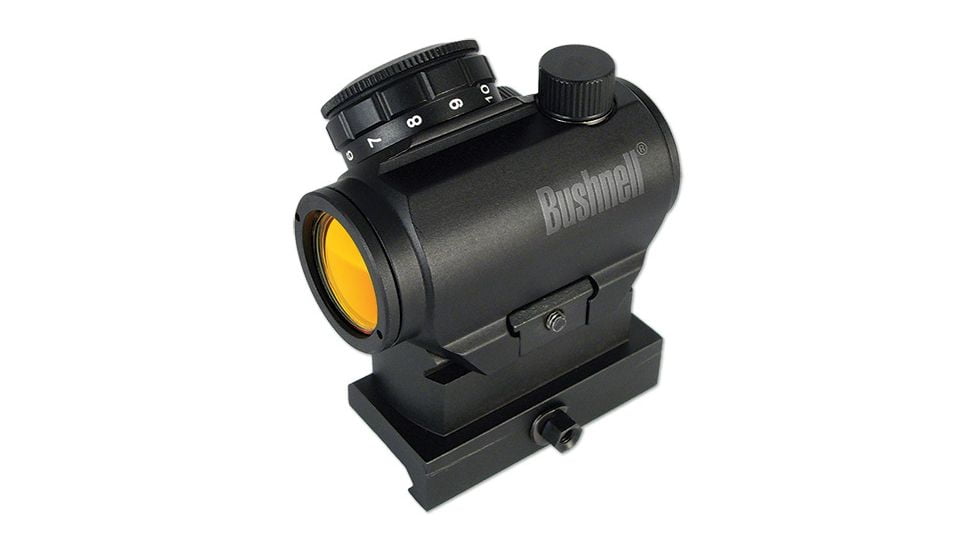
If you are looking for a decent middle-of-the-road optic, look no further than the Holosun HS-403B a feature-packed sub $200 red dot sight.
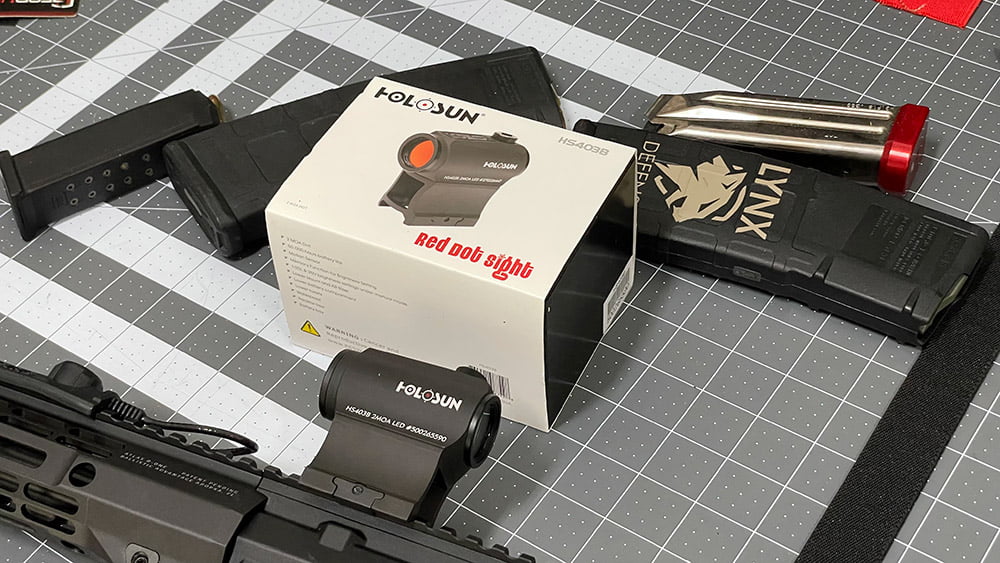
This might be the best red for sight for your AR-15! But, let us take a look at why it may be the best optic for you.
The Holosun HS403B is a compact optic with an included riser mount. The only catch is if you don’t like the height of the mount you are stuck with it unless you purchase another mount.
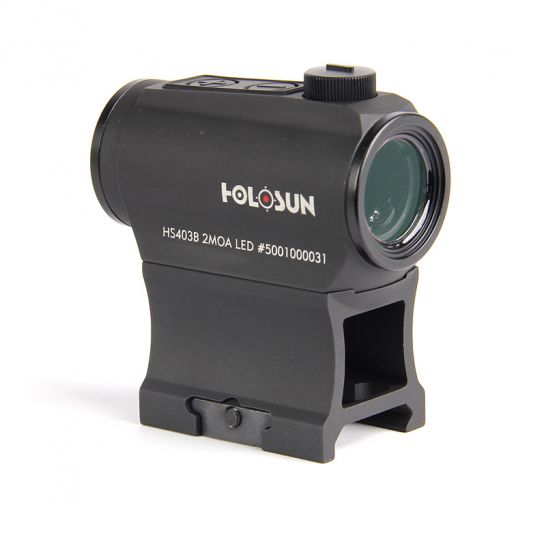
If you are looking for a red dot sight that’s ready to go this is definitely a good option for you.
There are other Holosun optics that I like a little better due to their similar price and increased feature set.
The Primary Arms SLx MD-25 is a 2MOA dot that is near perfect for almost any rifle.
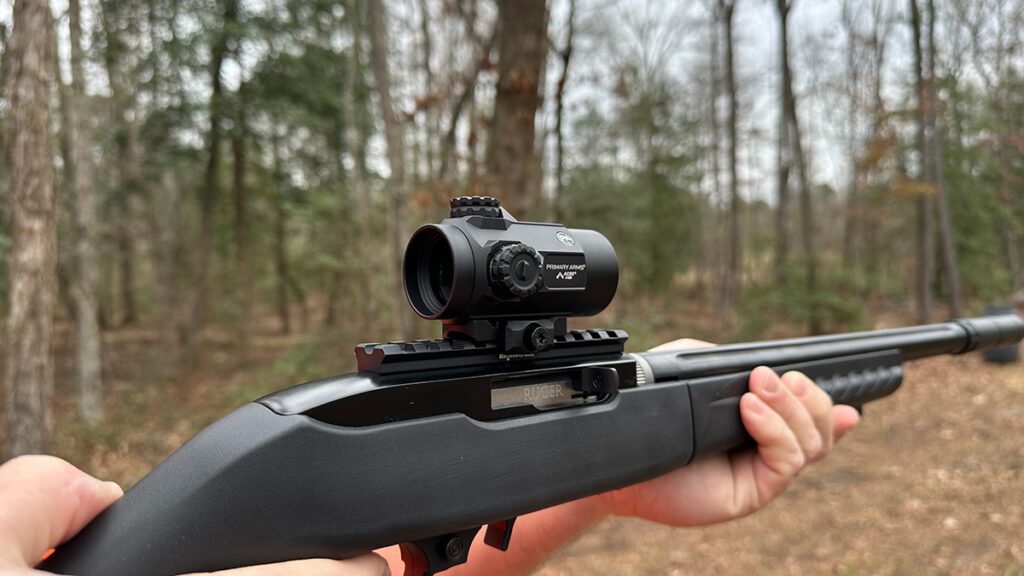
The ACSS Reticle in the SLx MD-25 has to be one of my favorite reticles. It incorporates the chevron and the horseshoe design to top off the near-perfect combo.
If you are looking for a feature-rich optic with an included mount of quality, don’t miss the PA SLx MD-25.
The battery life for this optic is exceptional and the included riser is near perfect. You can read our Primary Arms SLx MD-25 review in our review section.
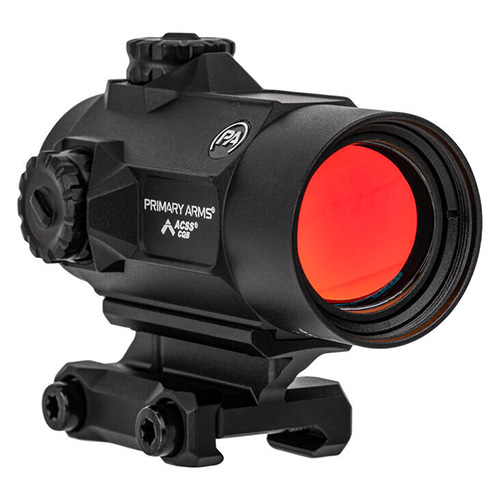
I’m not in the business of telling people what will work best for them. This country is all about individuals determining what’s best for them.
I’m just trying to provide you with my feedback and help you come to a decision.
So here’s a hypothetical list of things to consider when deciding what budget red dot sight to buy.
So, while it would be nice just to paste a picture of the best overall budget red dot sight, it’s hard to say. Personally, I think the best overall budget red dot sight available right now is the Sig Romeo 5 or the Gen II version we listed above.
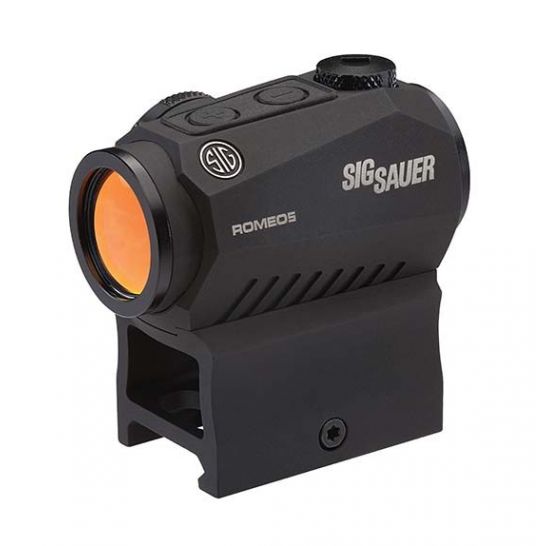
A company called AT3 also has a decent budget red dot sight called the AT3 RD-50 Pro.
Middle-of-the-road red dots are for those looking for a bit more in the features and durability department.
We have updated this article to move some of the so-called budget red dots to the mid-tier because their prices have crept since we originally wrote it.
One of the best optics for people with astigmatism is the PA SLx 1x Micro Prism sight. It is small, hence the “micro” prism, but it packs a punch!
I absolutely love mine and have run it on several guns. I even did a full review of the 1 x Micro Prism.
The best part of the PA SLX 1x Micro Prism is the price and feature set. The fact it has 45,000 hours of battery life and comes in under $300 is incredible.
The overall build quality of the optic is fantastic and if you want something that will make your good look fantastic, this will definitely do that.
If you want the best AR-15 red dot sight grab the SLx with the Cyclops reticle!
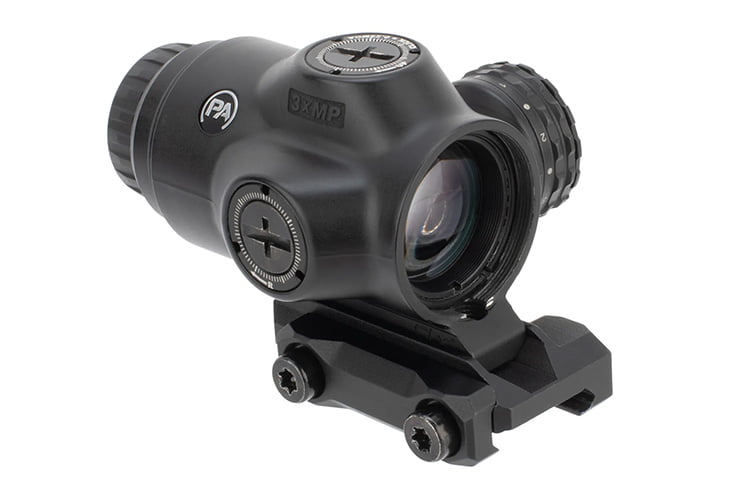

This boxy optic is one of my new favorites because it offers great housing and a fantastic feature set.
I have multiple of the AMG UH-1 optics for a few of my setups. Namely the Kriss Vector.
I recently picked up two of the UH-1s, and I really like them. EuroOptic is having a fantastic sale on them, including the 3x magnifier.
High-end red dot sights are all the rage on the Gram! After all, who doesn’t love rocking the best?
I know I do, and I’ve had my fair share of top-tier red dot sights. I really stick to three of my favorites.
Here are the top high-end red dot sights
The EOTech HWS is one of the most popular high-end red dot sights.
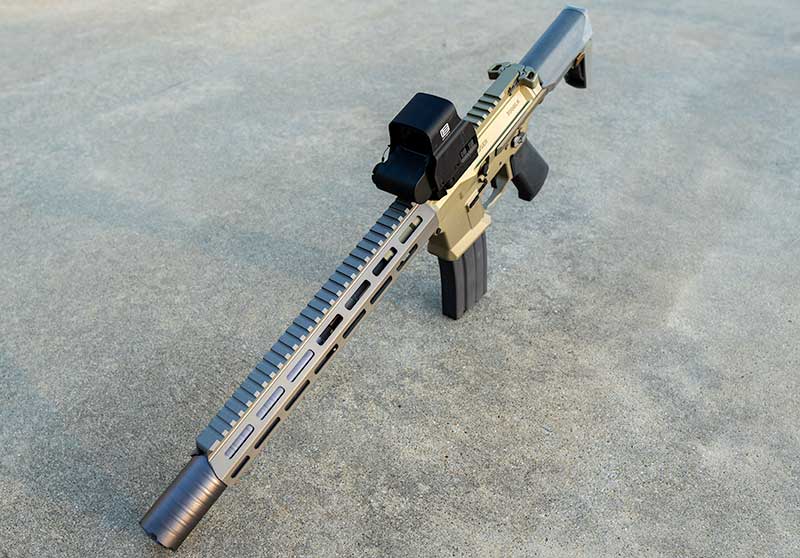
But it’s slightly more than just your average red dot. More than average, why, you ask?
It’s holographic!

But what does holographic mean? Well, I’m glad you asked.
Without getting all scientific, a holographic weapon sight keeps the reticle positioned in an exact area of the glass. So, if you move the weapon left or right, the reticle will stay on target.
This allows for accurate shooting even while moving or if something is blocking your optics viewports, such as snow or dirt.
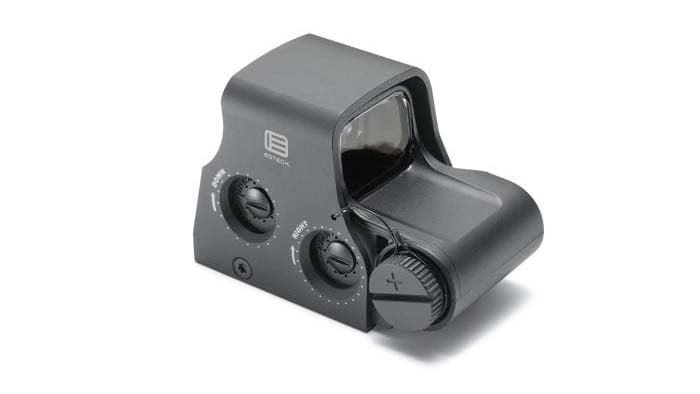
The EOTech HWS XPS2 is my go-to red dot sight if money is not an issue.
I like how the EOTech looks on my guns, and the function and ease of use are top-tier.
The Trijicon MRO came onto the scene in 2015 and has been climbing to the top ever since.
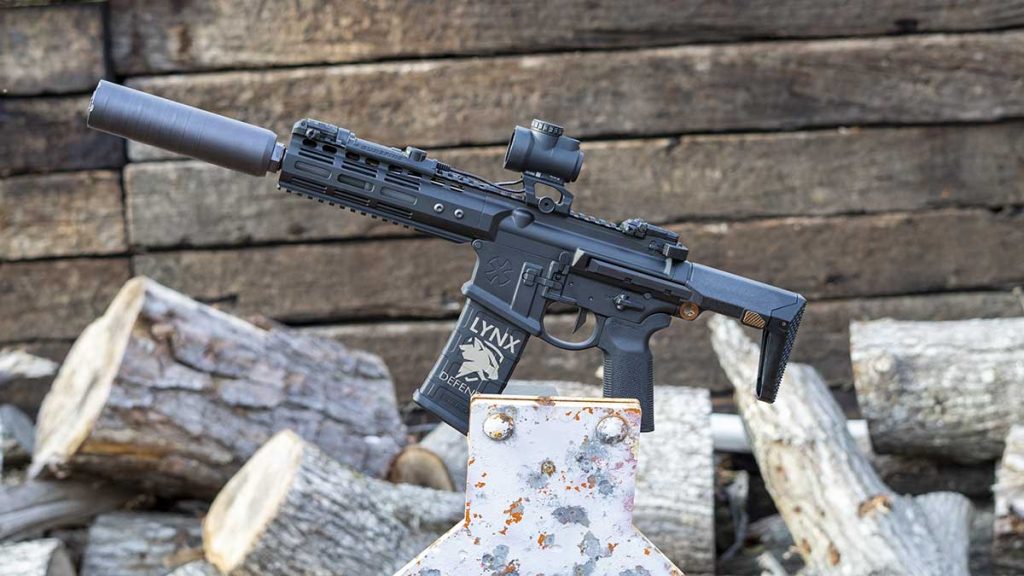
Trijicon is already a well-known sight and optic manufacturer. I run their night sights on my Glock 19.
While most people will know the name because of the Trijicon ACOG optic.
MRO stands for Miniature Rifle Optic, and while it’s not the smallest on the block, it’s still smaller than some of its other counterparts, like the EOTech series.
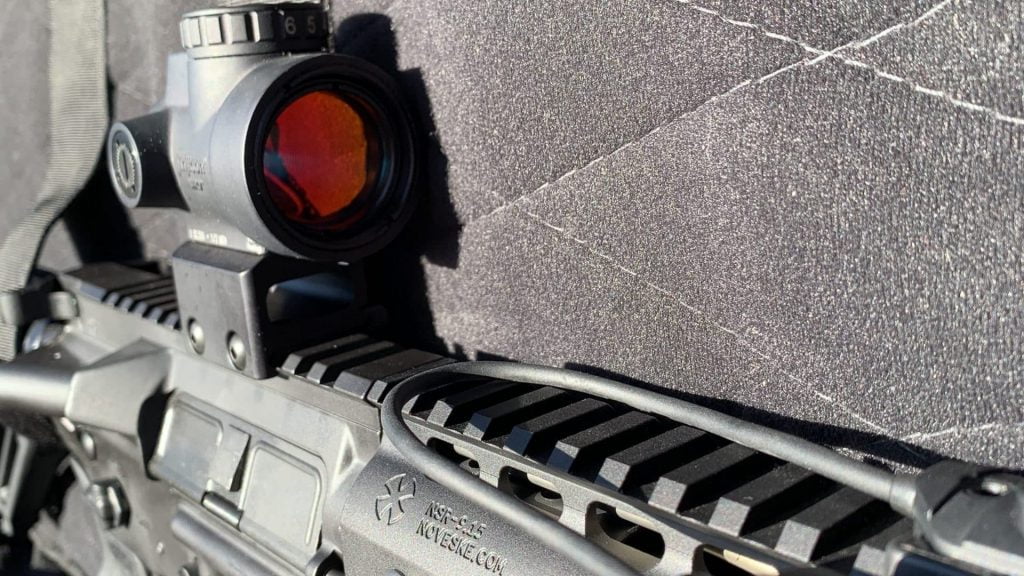
I like the MRO. It’s purpose-built and rugged.
The Trijicon MRO isn’t trying to be something it’s not.
It’s a small package with a wide field of view. The battery life is an impressive 5 years on the medium setting.
The MRO has been put through several torture tests and came through with flying colors.
The mounting options are endless, and from the factory, it comes with several options: no mount, 1/3 co-witness, and full co-witness.
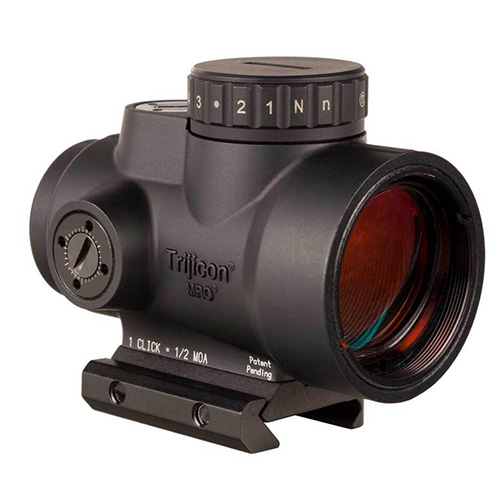
The Aimpoint Micro H-1 and I go way back. I feel like I’ve got to say this. The H-1 is like your high school prom date. All pretty, dressed up, ready to go out and possibly make some mistakes and get lucky, who knows.
The Aimpoint Micro T-2 is the new hotness so buy it if you’re looking for an Aimpoint Micro. I run my Micro H-1 on the Battle Arms Development rifle pictured below.
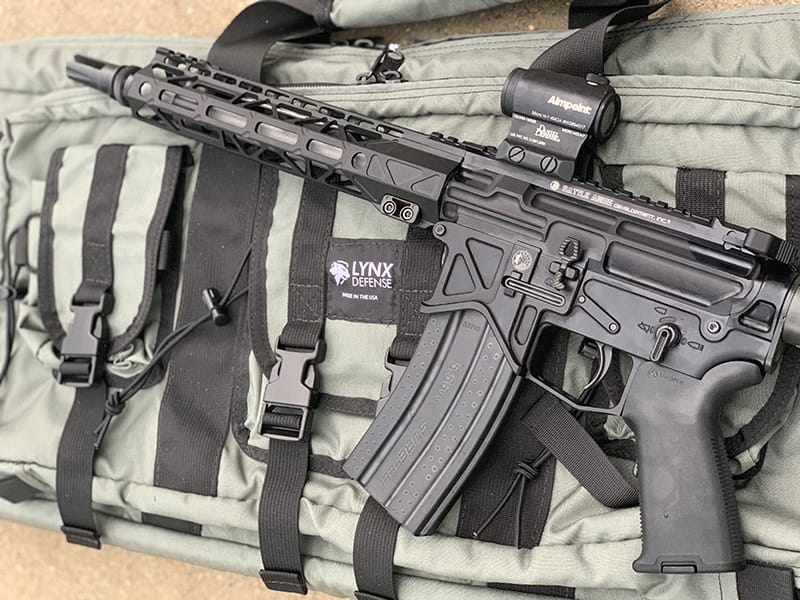
Anyway. I purchased the Aimpoint Micro H-1 after owning the EOTech 512 for some time. If you know anything about the EOTech 512, it’s bulky.

So getting the H-1 really changed things up a bit. It was a slim, compact red dot sight that I loved right off the bat.

Picking the best optic for you is essential. It’s hard to choose because there are so many options, but first and foremost, you want to narrow down your price range.
Once you do that, you can start to narrow in on what optics are in that price range that will work for you.
Then, you can look at things like reticles and features such as shake awake, weight, and battery life.
Once you have your price range, you can break down and analyze what red dot sight is going to work for you.
Ultimately, the most important thing is choosing what’s best for you, not what some biased reviewer will recommend.
At Lynx Defense, we try to give unbiased reviews, but of course, we can only really comment on the red dot sights that we’ve used. The ones included in this article are the ones that we’ve got our hands on so far.
Now, of course, we’re in an endless battle to try to get more, how we can bring them to you, and try to review them.
Picking the best red dot for you is probably one of the hardest questions you’ll ask yourself during your search for a sight.
The fact of the matter is that you’ve probably already decided to get a red dot sight.
There are so many options that you could get an LVPO, a red dot, a holographic weapon sight, or just run iron sights.
It really comes down to what will work best for you and your specific use case or mission.
I think it’s imperative to look at all of your options.
Again, as I’ve stated, it’s important to look at your price range, start from there, and narrow down your options.
After you have a price range, it’s pretty easy to find the high end of your price range, the mid-tier, and then the low end. But to figure out what’s truly just marketing nonsense and what’s a fact, you really want to go to somebody you can trust.
The internet is full of reviews. However, you never know who you can trust or who’s just trying to make a dollar. So a full disclaimer, Lynx Defense has obviously created links throughout this entire post. This entire post has pictures, optics, and links to all the different places across the web you can buy them. Most of those links are affiliate links. We make a small commission based on what you buy if you use our link to get there. Now, basically, what that entails is if we provided you with helpful information, it’s just a reward for us but doesn’t cost you a dime more.
We review all of our optics fairly and give them a fair shake. We are not beholding to any company for any reason under any circumstance. That’s why you’ll see we’ll link to Amazon, to Primary Arms, to EOTech. It doesn’t matter to us. We will link to them if it’s relevant.
We don’t care if you buy using our links or not. So, keep in mind when you’re looking at reviews, and you constantly see the same site or person push the same company over and over again, they could be getting paid for those reviews.
We hear all the time, “I bought this because X, Y, Z influencer said, this was the optic to buy.” When in reality, it didn’t fit their needs at all.
Then they ended up being unhappy with their purchase. That’s not at all what we aim to do here at Lynx Defense. We educate, and then you make the decision based on your needs.
This is why we’re so committed to this particular article and keeping it up to date year after year, month after month, as new optics become available and as we were able to get our hands on new optics.
Obviously, we don’t get a chance to test every single model of every single configuration of every optic ever made.
That would be awesome.
But unfortunately, we don’t have the time or the financial resources to really make that happen.
I really don’t know anybody who does.
So, of course, this post will be somewhat biased in that these are the ones we’ve got our hands on thus far.
These are what we recommend. We’re also going to tell you, that we don’t recommend going below a certain point.
For example, the Bushnell TRS-25 is pretty much the bottom. We don’t recommend going anything below that.
No optic that’s just total plastic, without any metal, it’s out the door.
Anything below the $50, $60, or $70 price point of the Bushnell TRS-25 is a no-go for us.
So keep in mind we’re not going to recommend low quality at all. No matter how cheap it is.
We’re not trying to make a buck. We’re trying to educate.
If we can get rewarded for the time we have invested for this by using the affiliate, awesome, but all we really want is for you to learn something from our work.
Red dot sights have many different reticles, and most of the time, the one that is “best” boils down to your personal preference.
There are different schools of thought that some are better than others for target acquisition, but I won’t go down that road.
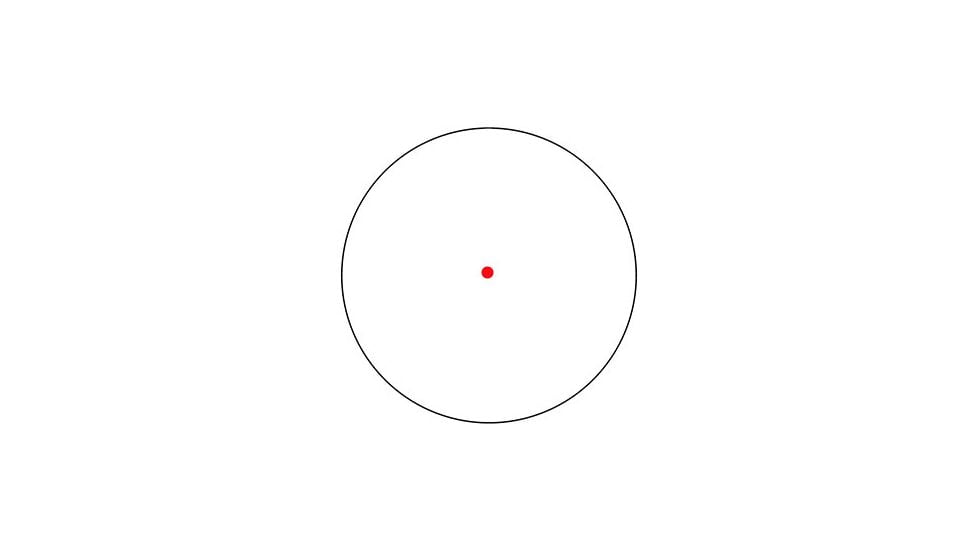
The single dot reticle is just that, a single dot. That dot can range in MOA and crispness.
Low-end optics could see a lot of distortion around the dot, whereas high-quality optics should have a crisp and clean dot.
The dot can range anywhere from 1-6 MOA.
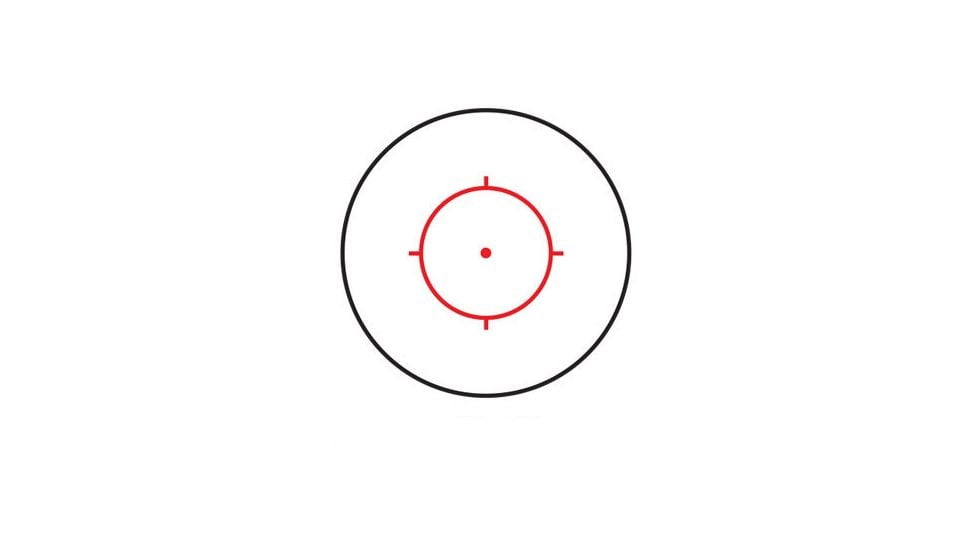
Circle dots reticles have a circle around the center dot.
These have much faster target acquisitions since you can place your target in the circle for faster but less precise hits.
Personally, this is one of my favorite reticles.
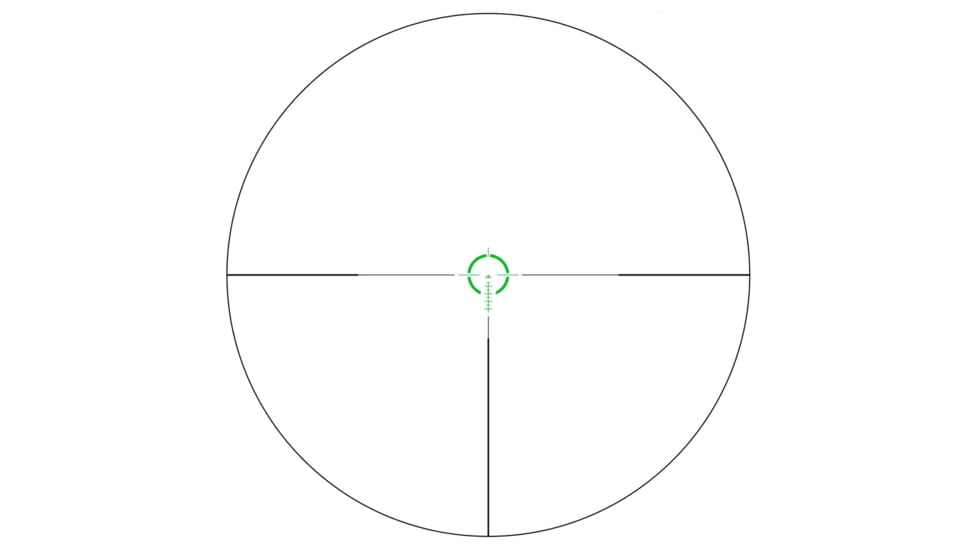
Ranging reticles don’t have a standard look. They can vary in shape and size, and function. But the purpose of them remains the same, and they help you adjust your optic for shooting longer or shorter range.
You don’t see this reticle often in AR-15 red dot sights.

Multi-dot reticles are pretty much what they sound like, multiple dots. Typically, multiple dot reticles are used for ranging.
The top dot could be sighted in for 50 or 100 yards, and then you would be able to determine what your bottom dot would be at 150 – 200 yards.
These reticles are popular in EoTech HWS (holographic weapon sights).
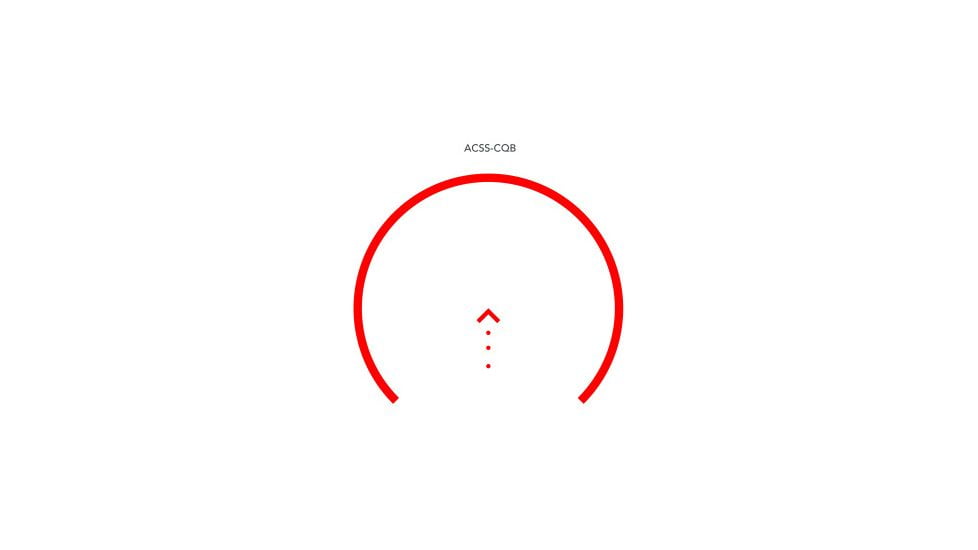
The horseshoe dot reticle is similar to the circle dot reticle. The minor difference of the circle is open at the bottom creates a horseshoe instead of a complete circle.
Like the ACSS-CQB reticle from the Primary Arms MD-25 above, the center dot is a chevron and not a plain dot. The horseshoe/dot reticles can interchange the center dot and over have ranging dots below the larger center dot.

The crosshair reticle is also not a common red dot reticle. These are typically found in magnification scopes. Some lower-end optics, like NcStar, feature these types of reticles.
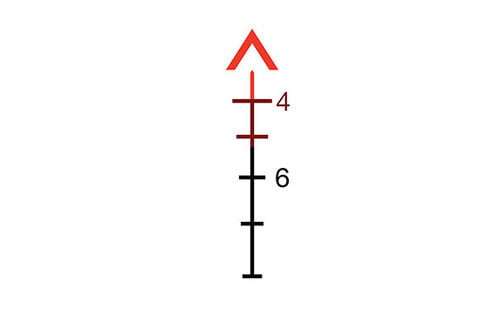
Chevron reticles look like an up arrow without the tail. This is a reticle popularized by the Trijicon ACOG optic.
You often see MOA, which means “minutes of angle,” all over red dot optics product pages.
MOA is a unit of measurement of a circle and is used to determine the size of the dot and how much it will cover your sight picture at a specific distance.
MOA dots usually are between 2 – 6 MOA, and the smaller the number, the less the dot will cover your target.
If you are set on a red dot sight the above options are probably the best. But are you interested in other optics?
If you are looking for something more than a red dot you might want to get a Low Power Variable Optic (LVPO) like the Vortex Strike Eagle.
Red dot sights can be hell for someone with astigmatism. The dot won’t be crisp and you’ll have difficulty acquiring targets and having a positive shooting experience.
I’ve found that prism optics are probably your best bet when it comes to astigmatism.
My current favorite Prism optic is the Primary Arms SLx 1x Micro Prism.
If you want to have a more manual optic you can get backup flip-up sights in case your battery dies or the optic fails.
These are know as BUIS or backup iron sights and come in a number of different flavors. If you want to be sure you always have manual and optic aiming take a look at our best flip up sights.
I read a lot of your articles. They are very good, objective and fair!
Very helpful,I appreciate all the insight and helping me make an easier decision on what optic I should look into or buy